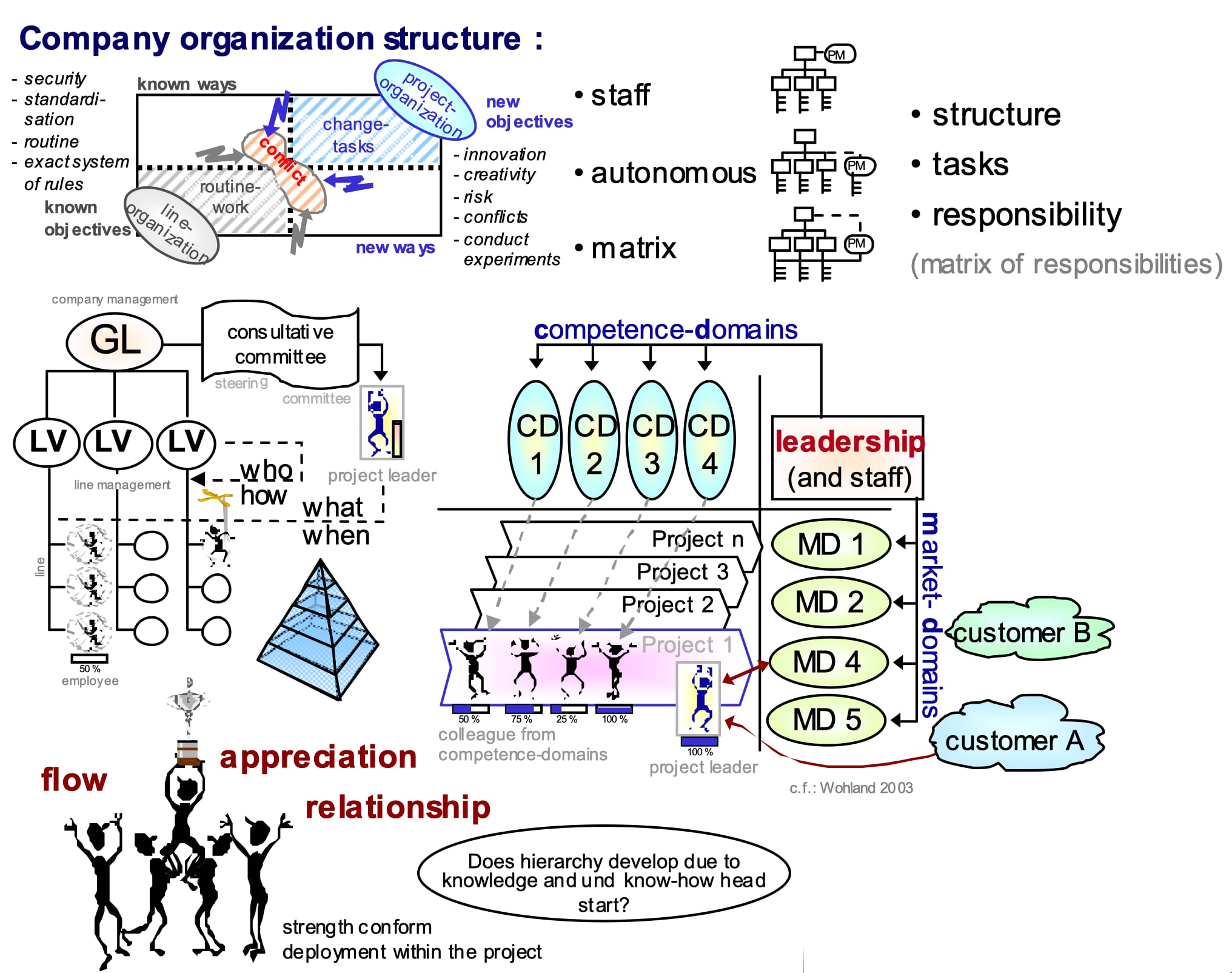Mastering Values, Leadership, and
Change» (ISBN-13: 978-1405133562)

The Project Roadmap® from www.project-roadmap.com includes the Company and Project Organization! This is where you'll learn how to structure your project team or company for success!
We all know that working together is essential to achieve our goals, and this module will show you how to do it effectively. You'll learn about different types of project organizations and how to select the right one for your project.
Establishing clear roles and responsibilities is also critical to project success, and this module will guide you on how to do that. You'll learn how to create a project organization chart that outlines each team member's role and reporting relationships, which will help keep everyone on the same page.
Effective communication and decision-making processes are essential in any project organization, and we'll cover these topics too. You'll learn how to establish communication channels and protocols, as well as how to define decision-making authority and processes.
Finally, we'll introduce you to the quadrant of known objectives/known ways and new objectives/new ways, which is a tool for categorizing projects based on their level of uncertainty. This will help you determine the appropriate project management strategies and approaches to use for each project, whether it's routine or innovative.
The quadrant is divided into four categories:
By categorizing projects based on their level of uncertainty, project managers can develop appropriate project management strategies and approaches. For example, routine projects may require less formal project management processes and controls, while innovation projects may require more flexible and adaptive approaches.
Overall, the quadrant of known objectives/known ways and new objectives/new ways is a valuable tool for project managers and teams to categorize projects based on their level of uncertainty and to develop appropriate project management strategies and approaches.
The Wohland 2003 matrix is a valuable tool for mapping the competence domains and leadership market domains in a project management context.
The matrix consists of two axes: the horizontal axis represents the competence domains, which are the areas of expertise project managers and team members need to possess to manage projects effectively. The vertical axis represents the leadership market domains, which are the leadership skills and competencies that project managers and team members must possess to navigate the project management environment successfully.
The competence domains in the Wohland 2003 matrix include project planning and control, risk management, communication, and team building. let's talk about the Wohland 2003 matrix! This is an amazing tool that can help you improve your project management skills and competencies.
The matrix is divided into two parts - competence domains and leadership market domains. The competence domains cover important aspects such as project planning and control, risk management, communication, and team building. On the other hand, the leadership market domains focus on strategic thinking, decision-making, communication, and interpersonal skills.
By mapping your skills and competencies onto this matrix, you can quickly identify where you excel and where you may need some extra help. This will enable you to create a customized training and development plan that will help you improve your project management skills and become an even better leader.
So, if you're looking to take your project management skills to the next level, the Wohland 2003 matrix is the perfect tool to help you get there!
Does hierarchy develop due to knowledge and und know-how head start?
A hierarchy can develop within a project team or organization based on differences in knowledge and know-how. For example, individuals with specialized knowledge or expertise in a particular area may be viewed as leaders or experts within the team or organization. It's important to understand that knowledge and know-how can create a hierarchical structure, but that's not the whole picture. Other crucial factors like leadership, communication, and experience can also play a part in how hierarchies develop.
That being said, teams and organizations must be aware of the potential for hierarchies to form based solely on knowledge and know-how. To combat this, it's crucial to establish clear communication channels and encourage knowledge sharing. Collaboration and teamwork are also essential, and professional development and training opportunities should be available to everyone to enhance their skills.
By prioritizing inclusivity and collaboration, teams and organizations can create an environment that values everyone's contributions, regardless of their level of knowledge or expertise.
SDTEST® allows you to determine in project managers the makings of an orange behavior model that is most appropriate for project management. The higher the percentage in orange as a result of the SDTEST®, the more naturally the model of this person's behavior corresponds to the requirements of project management.
